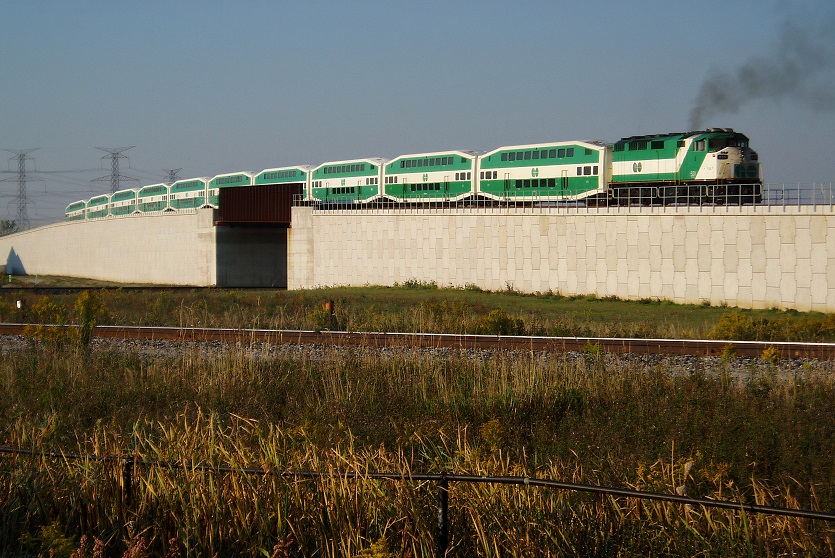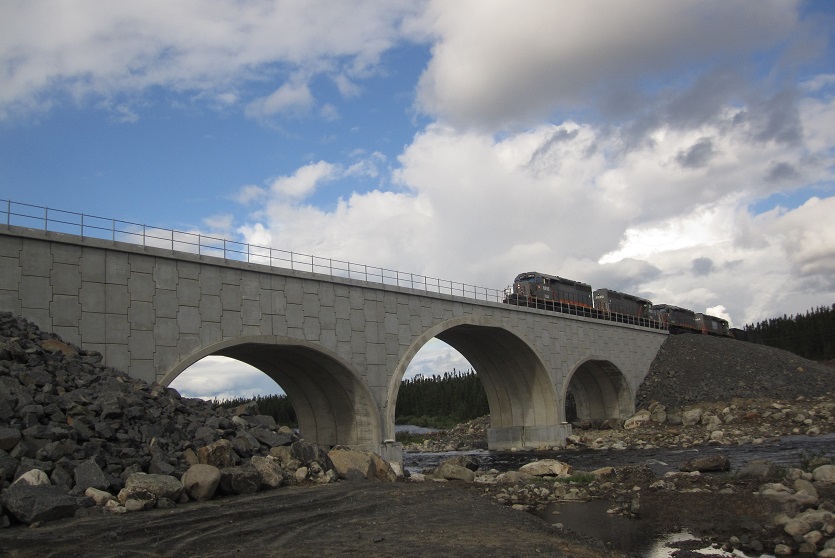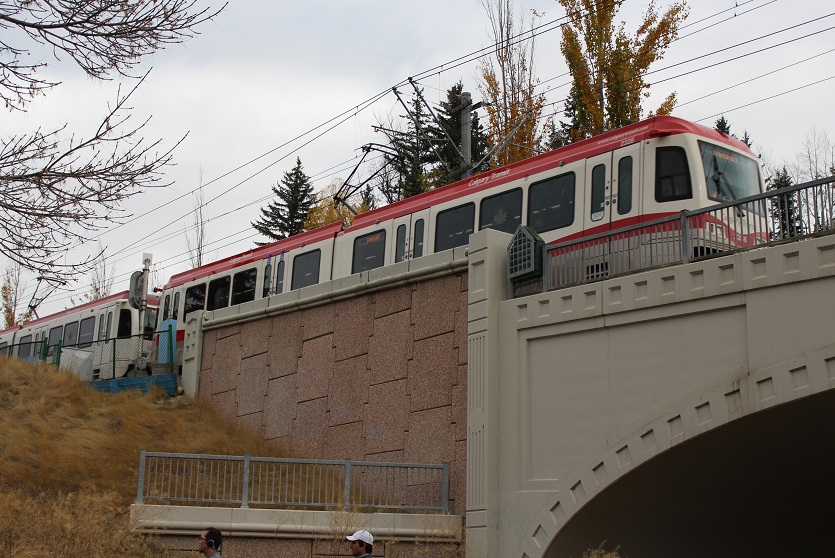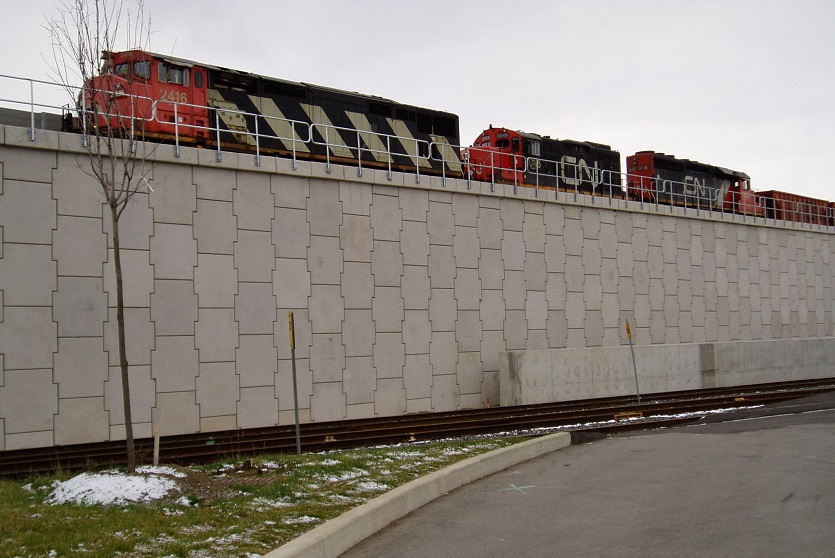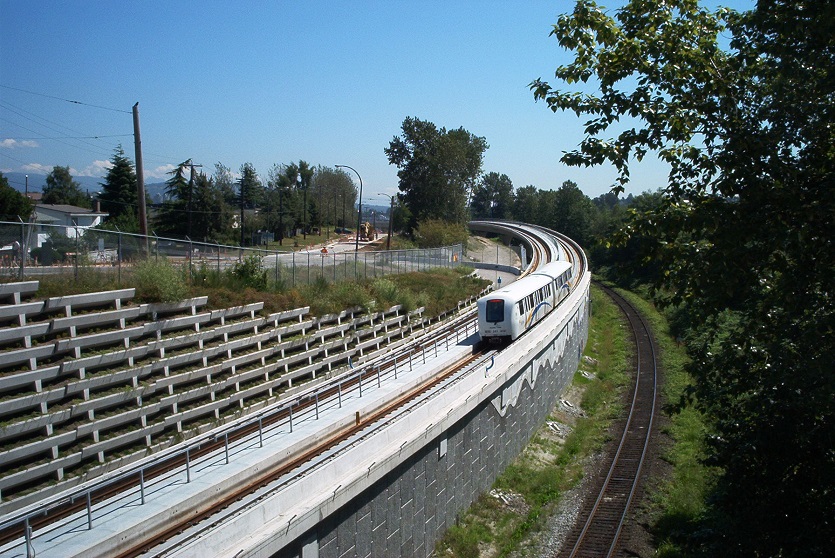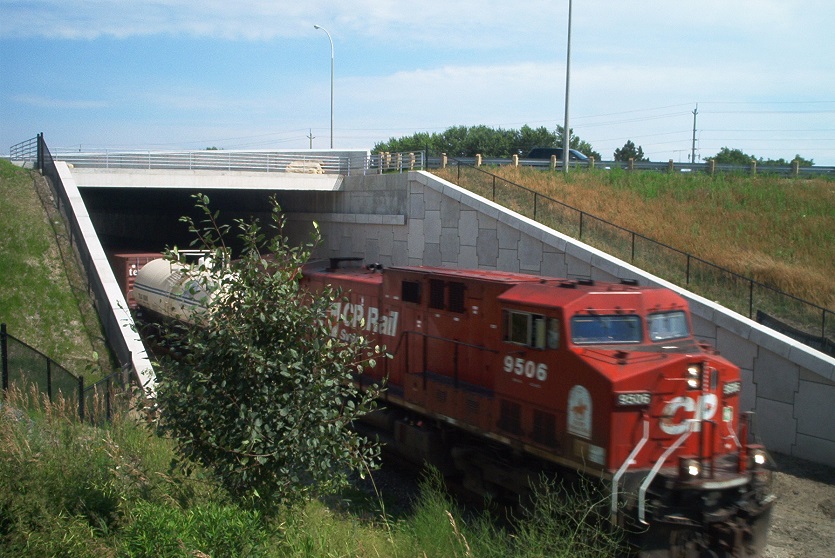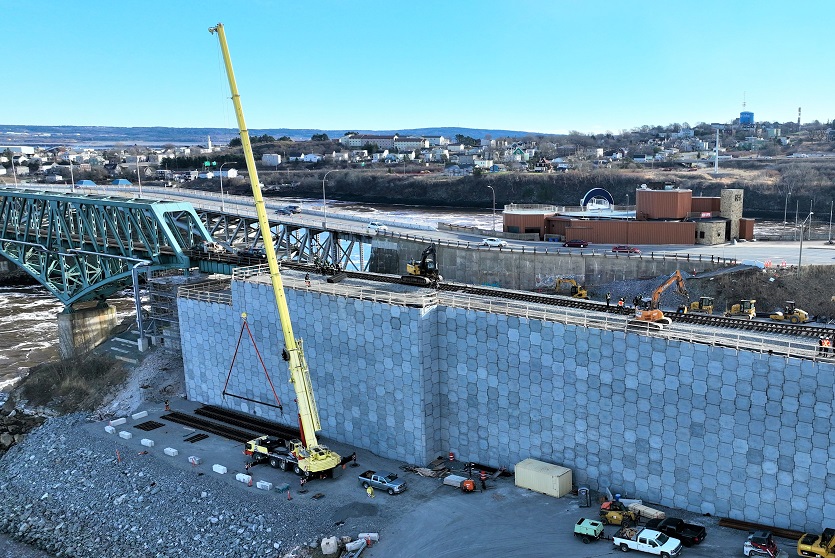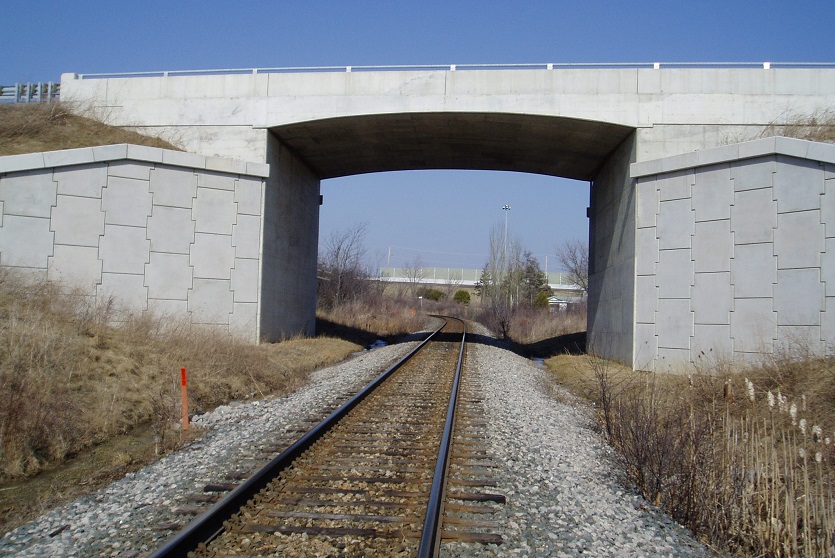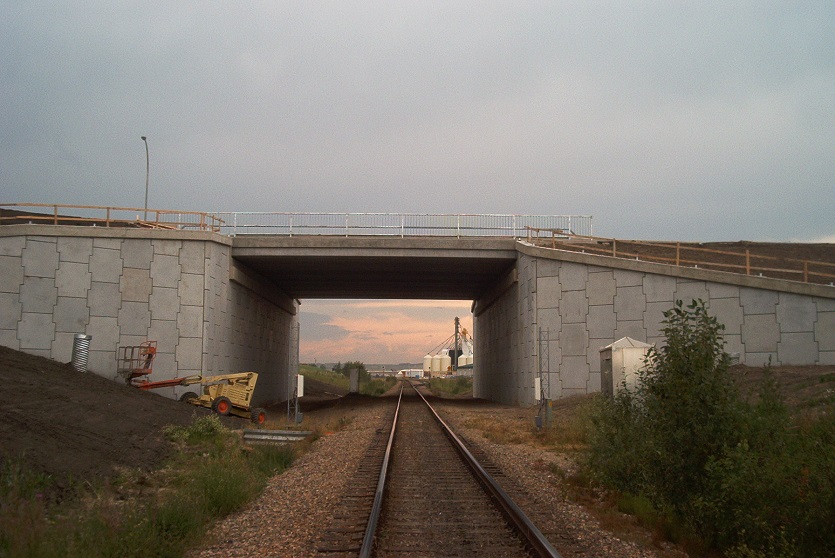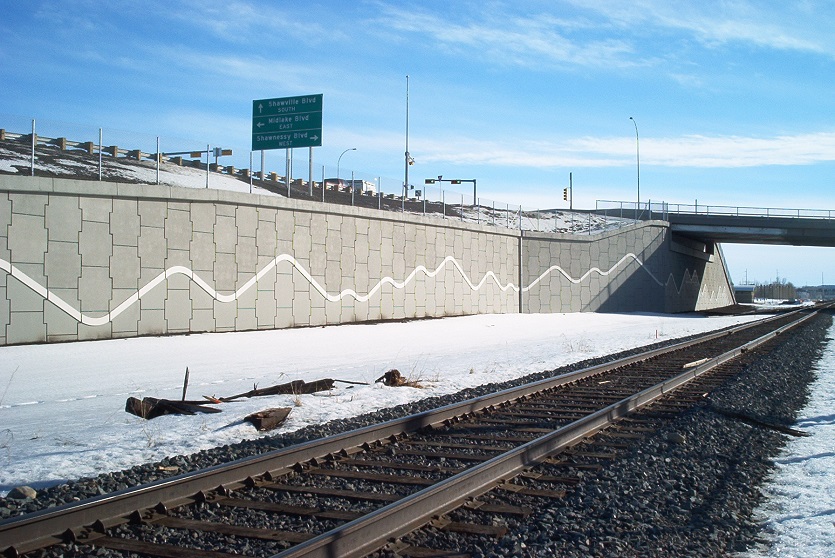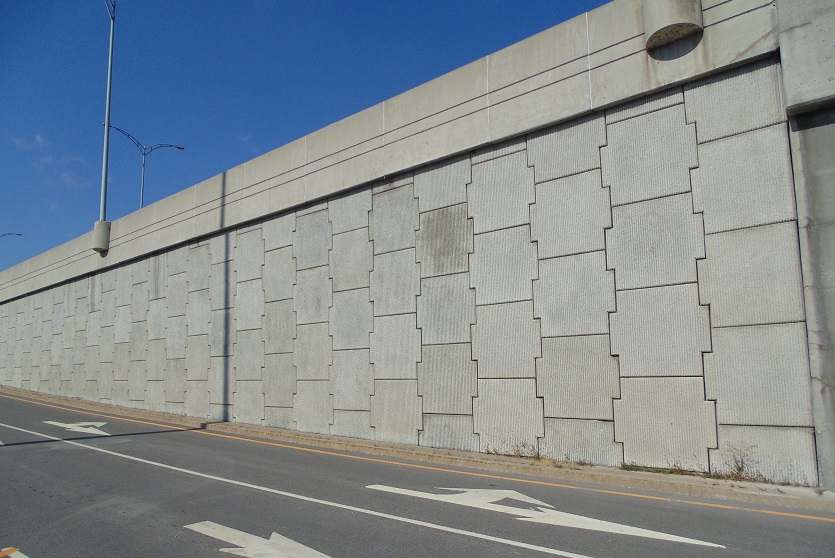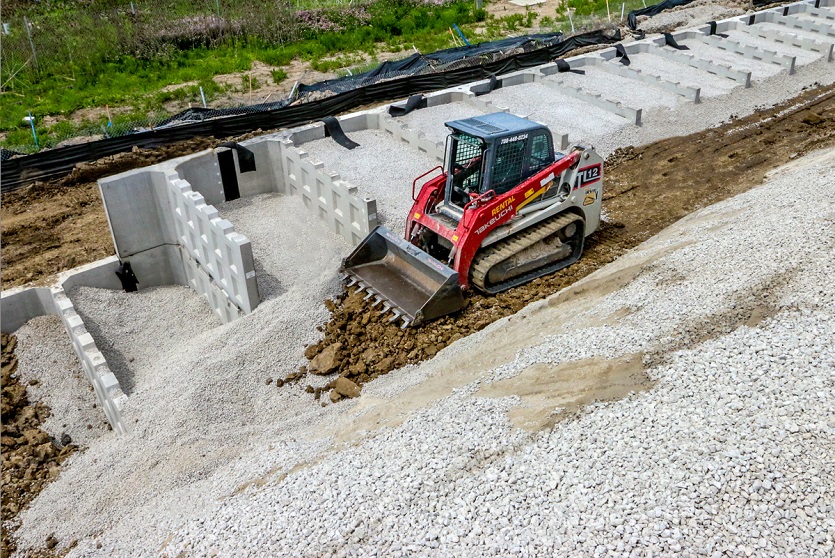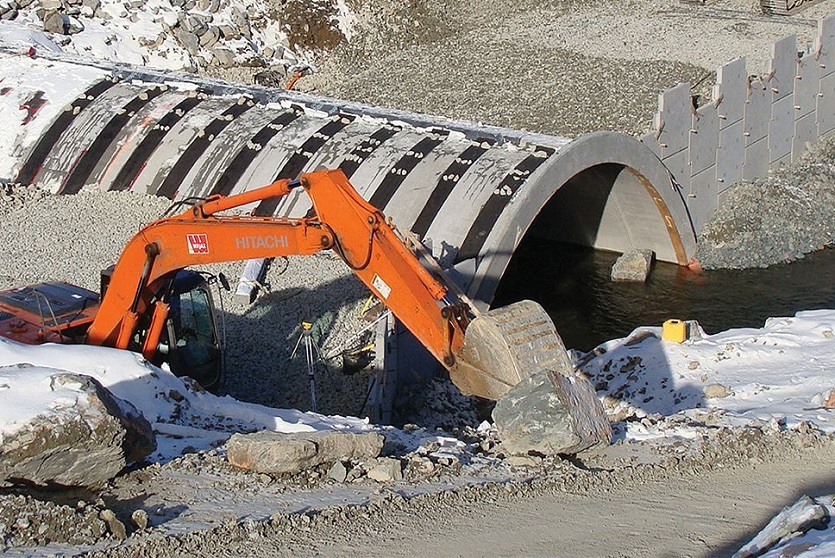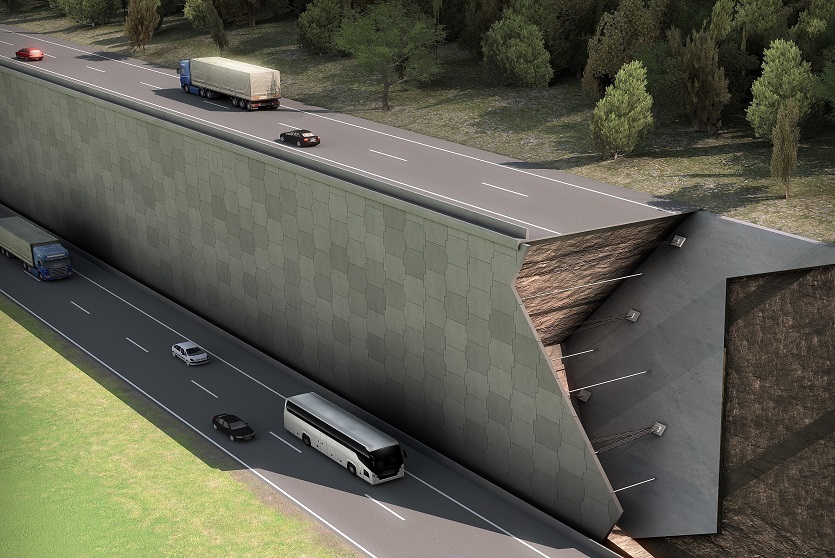RECo’s MSE walls for railway structures are recognized across the country as the preferred economical solution to earth retention and load support requirements for railroads.
The retaining structures alongside railway lines must be perfectly capable of absorbing the vibrations caused by passing trains while supporting the high stresses generated by the acceleration and deceleration of the trains. The characteristics of our Reinforced Earth® (MSE) and T-Wall™ retaining walls make it a perfect solution for these high load and high stress conditions in railroads. For constructing tunnels and large culverts we offer TechSpan® precast concrete arch solutions. All these solutions can work in harmony and are ideally suited to construct many types of railway structures supporting heavy freight rail, light passenger rail, and high-speed railways.
MSE walls for railway structures use the same technologies as those for roads, although the design is clearly modified to reflect specific requirements relating to overloading and factors of safety, especially for high-speed trains. We offer a long list of railway infrastructure applications with our reliable products, including trackside retaining walls, grade separations, flyovers & underpasses, bridges, bridge abutments, tunnels, yard facilities, station improvements, and more.
MSE retaining walls for railway structures
The inherent strength and flexibility of a Reinforced Earth® wall solution give powerful solutions for rail and transit stakeholders, their engineers, and constructors to meet strict structural, geotechnical and economical challenges of all types in terms of sizes and complexities. Reinforced Earth® and TerraTrel® mechanically stabilized earth (MSE) technologies serve as the ideal retaining wall solutions for concrete or wire mesh panel infill walls on Class I Railroads.
Under some restrictive circumstances, the most effective alternative to MSE walls will be T-Wall™. It is a precast modular retaining wall system and it offers an optimal solution when designers are challenged with constraints related to highly restrictive rights-of-way, narrow in-fill clearances, obstructions behind the wall facing, etc. Our precast modular retaining wall system, T-WALL™, has been used successfully in the railway industry for decades now.
During railway widenings and twinnings when designers encounter existing structures in close proximity to new structures, then the shored retaining wall TerraLink® solution is to be considered the best option. TerraLink® can be constructed in front of an existing structure or natural soil or rock where there is only a narrow space between the two.
Cut and cover railway tunnels
TechSpan® precast concrete arches are frequently used for the construction of railway tunnels in earth embankments or in cut-and-cover conditions. The TechSpan® solution involves a strong soil-structure interaction, associating three-hinge prefabricated concrete arches to a structural backfill. The main advantages of TechSpan® are the structural quality, rapidness of installation and adaptability to the specific clear opening size requirements of each project. Reinforced Earth® is a perfect complementary technique for the construction of head walls and wing walls when combined with TechSpan® precast concrete arches.
Noise protection for MSE walls for railway structures
The construction of railways close to residential areas can be a source of noise disturbance for the people living nearby and RECo’s sound absorbing panels have proven to be an effective solution to mitigate noise.
Benefits
Strength, resilience, durability
Strength, resilience, durability
RECo wall systems provide for significant load bearing, resistance to stray currents, resistance to vibrations, and resistance to deformation.
Reliability and reduced maintenance
Reliability and reduced maintenance
Standardized manufacturing for components ensures consistent and uniform quality and appearance. Our solutions have proven to be durable and to require limited maintenance.
Lower environmental impact
Lower environmental impact
Using relatively thin sections results in lesser consumption of concrete, steel, and land use, thus reducing carbon emission while minimizing environmental footprints.


